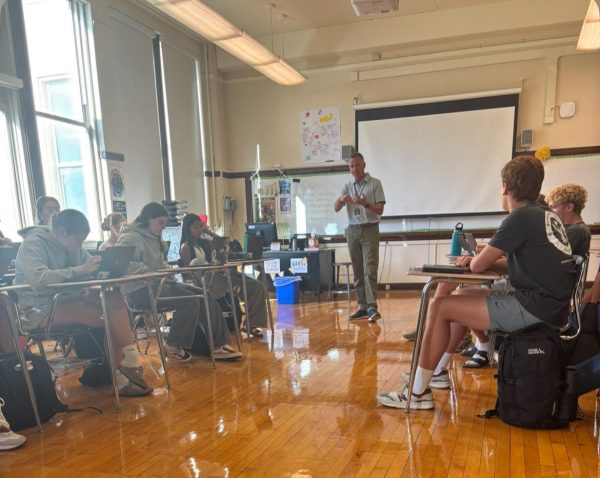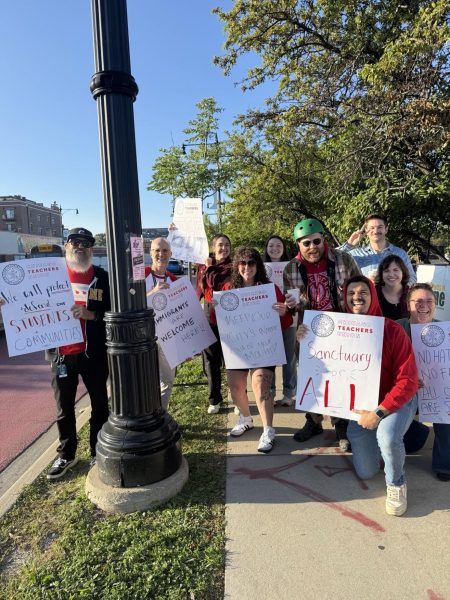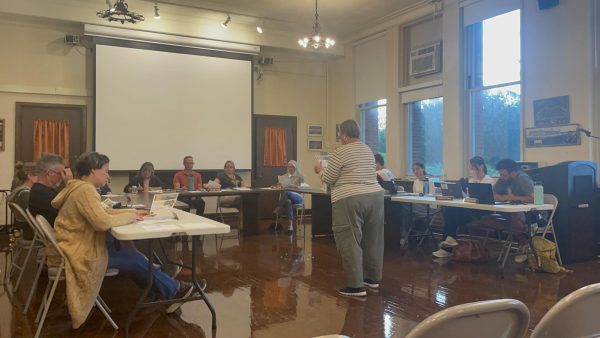Lane ahead of Illinois initiative to prioritize gender inclusivity
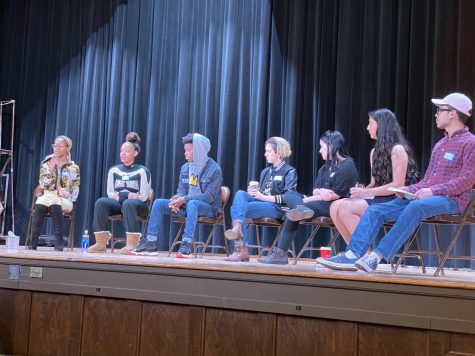
Prior to the Jan. 8 division panel, students met to prepare their statements and discuss their experiences of harassment.
Lane touts a diverse and inclusive environment. For the most part, Jude Greiner, who identifies as non-binary, feels comfortable expressing their gender identity through fashion and asking peers and teachers to use their preferred pronouns.
However, even in a school as seemingly accepting and united as Lane, Greiner, Div. 051, co-president of Lane’s Gay-Straight Alliance club, has faced verbal harassment.
“In the halls, I’ve been called the F-word a few times,” Greiner said. “During Pride, people were wearing pride flags and I heard the F-word more around then.”
Greiner noted that they have never been harassed in class. In a classroom, a student would have to take ownership of their speech, Greiner said.
“In the hallway, they can call you the slur and then disappear into the crowd, and I know I’m not the only one to have experienced it,” Greiner said. “They don’t have to see you again because we’re such a large school. They don’t have to take any fault.”
Greiner is not alone in their experience. According to a 2019 national survey conducted by The Trevor Project, 78% of transgender and non-binary students have faced discrimination due to their gender identity.
Student accounts of discrimination based on gender identity and sexual orientation are spurring national and state leaders to push for legislation and guidelines aimed at recognizing the experiences of LGBTQ+ individuals, protecting their rights and ensuring their safety in the school setting.
On Jan. 1, a task force of 27 students and community leaders submitted a report to Illinois Gov. J.B. Pritzker on ways to strengthen inclusion in schools and create a safer learning environment, particularly for transgender and gender non-conforming students.
The Illinois task force, chaired by Naperville high school student Jax Wokas and Illinois State Board of Education Chair Darren Reisberg, compiled a report with specific guidelines aiming to protect and advance the rights of transgender, non-binary, and gender non-conforming students. The report recommended creating better policies, improved teacher preparation, comprehensive sexual education curriculum, and greater inclusion of LGBTQ+ individuals in school-based activities.
Assistant Principal Sarah Hanly said Lane has long been a place where diversity and inclusivity have been celebrated and promoted, but the school has taken more specific steps in recent years with the introduction of gender neutral bathrooms in 2017.
For Greiner, the implementation of all-gender restrooms was a profound step in the right direction.
“At that time, I was still coming out as non-binary,” Greiner said. “I thought, if I use this, it’s kind of a nonchalant, quiet way of saying I’m not comfortable using either of the binary bathrooms.”
Hanly said that Lane’s school improvement planning team is focused on creating an equitable learning environment for all students.
“Last month, we asked teachers to look at their classrooms,” Hanly said. “How are we showing inclusiveness in our classrooms? What posters do we have on the walls? Who’s represented in those posters? Are we being good with our pronoun usage?”
On Jan. 8, a diverse group of Lane students assembled in the auditorium during advisory to share their experiences of exclusion and harassment and with the student body. Greiner was among them.
“Creating the conversation and keeping up the conversation is really important, especially among freshmen,” Greiner said. “We need to teach freshmen and LTAC that we’re an inclusive environment here at Lane. We don’t tolerate hate here.”
In addition to the efforts of Illinois’ task force and Lane’s student panel, state lawmakers took steps to further enforce the importance of representation in education. In August 2019, Gov. Pritzker signed the Inclusive Curriculum Law, requiring Illinois K-12 schools to include lessons on the history and contributions of LGBTQ+ individuals under the state’s Humans Rights Act.
A member of the LGBTQ+ community, Reisberg said that such legislation would have been impactful to him as a young student.
“There was absolutely nothing in the curriculum throughout my pre-K to high school years that gave me any idea that there were LGBTQ people that were regular people doing amazing things,” Reisberg said.
The State Board of Education plans to finalize and publish the task force’s guidelines on its website by March 1 so schools across the state have recommendations for how to provide a more welcoming environment for LGBTQ+ students, according to Reisberg. Although the guidelines are not a mandate, Reisberg is hopeful they will generate change.
“I would say that by the end of the Governor’s first term … we’ll be at a place where we’ll see a major shift in culture and acceptance,” Reisberg said.
Despite the strides Chicago schools have made to increase inclusivity, Reisberg said that there is always more to be done and that suburban and rural Illinois administration especially must communicate with their school boards so that they understand the importance of addressing these issues.
“Students are not able to learn and take advantage of everything that school has to offer if they don’t feel safe and if they’re just worried about surviving. It’s absolutely essential,” Reisberg said.
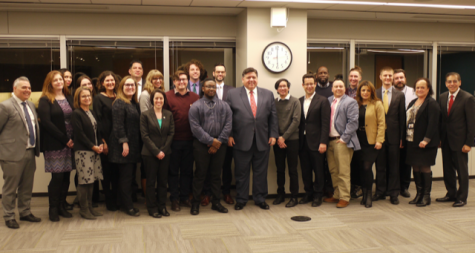
Gov. Pritzker met with the task force when he signed the executive order to increase gender inclusivity.
Your donations directly fund the Lane Tech student journalism program—covering essential costs like website hosting and technology not supported by our school or district. Your generosity empowers our student reporters to investigate, write, and publish impactful stories that matter to our school community.
This website is more than a publishing platform—it's an archive, a research tool, and a source of truth. Every dollar helps us preserve and grow this resource so future students can learn from and build on the work being done today.
Thank you for supporting the next generation of journalists at Lane Tech College Prep!

Olivia Fergus-Brummer has been writing for the Warrior since the fall of 2018 and is now a senior. She loves theatre, political science, and music, and...

